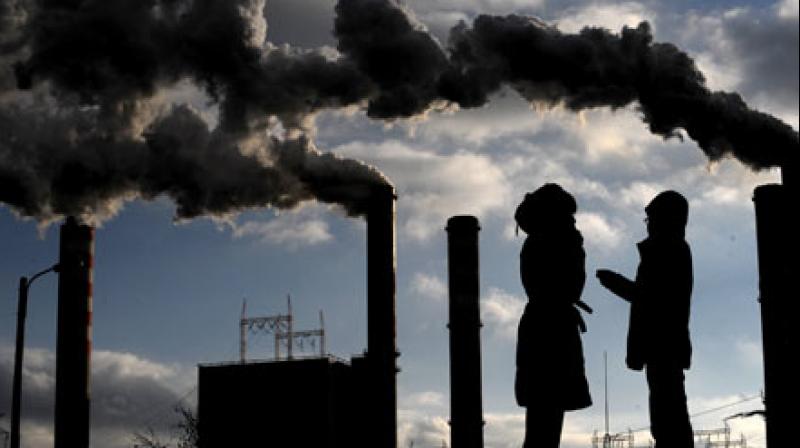Ecoistic: How to trap those carbon-credits
As per Kyoto protocol, developed nations should reduce their greenhouse gas emissions by 5.2 % by 2012 against 1990 levels.

It has become a common term in today's world to talk and discuss about "Carbon Credit". But many of them in the developing world are still unaware of what exactly this means. To put it in simple terms, Carbon Credit is, a unit of measure, the credit given to some individual entity, organization etc., if they reduce their Green House Gas emission (which is also CO2 equivalents) by one unit. This is just a flexibility mechanism provided through the Clean Development Mechanism (CDM) under the Kyoto Protocol. These carbon credits are either traded between or transferred from developing countries to the developed countries.
In simple terms - the countries / entities which are unable to reduce their emissions in their businesses in a cost-effective manner in their own / home country, can invest in clean projects. This means such countries / entities can support and promote projects which help reduce emissions in the developing countries. These emission reductions can be certified and the credits thus earned can be traded or transferred to developing countries. Under the Clean Development Mechanism, emission-reduction projects in the developing countries can earn certified emission reduction credits.
These credits (which can be sold) can be used by industrialized / developed countries to meet a part of their emission reduction targets under the Kyoto Protocol. This mechanism, automatically, stimulates and promotes sustainable development initiatives and emission reduction mechanisms. At the same time it also gives developed countries some flexibility in how they meet their emission reduction limitation targets.
Another interesting feature of the Clean Development Mechanism is that it is the main source of income for the UNFCCC Adaptation Fund, which was established to finance adaptation projects and programmes in developing countries, Parties to the Kyoto Protocol, that are particularly vulnerable to the adverse effects of climate change.
Features of Kyoto protocol:
World nations are divided in to Annex & Non - Annex - countries (Developed & Developing Countries)
As per Kyoto protocol, developed nations should reduce their greenhouse gas emissions by 5.2 % by 2012 against 1990 levels. They also have the responsibility to provide technology & financial assistance to Non - Annex countries to reduce their emissions. Whereas developing nations are set free to and no compulsion to bind the emission targets.
In order to control emissions by developed countries, Kyoto protocol assigns two types of responsibilities: Emission Trading / Carbon trading and Clean Development Mechanism (CDM)
Emission Trading / Carbon trading: Every Industrialized nation has given certain quota of units called Kyoto unit, which is equivalent to emission of 1 Ton of CO2 or equivalent emissions of other greenhouse gases like Methane, Nitrogen oxides, etc. If any nation exceeds these quota, it needs to purchase Kyoto units from other nations which saved Kyoto units by reducing their emissions and bind below the assigned amount units (AAU). All these transactions are expressed in Carbon credits which gives right to emit 1 Ton of CO2 or equivalent amount of other greenhouse gases. This is called "Carbon Trading / Emission Trading.
Clean Development Mechanism (CDM) : Alternatively to Carbon credit , Industrialized nations could opt to bind their target emissions by promoting Cleaner and carbon free technologies in developing countries like India by assisting in finance & cleaner technology to developing nations in their energy sector and thereby credit Kyoto units. Clean development mechanism may equally applicable to companies in Developed nations as well. They also can acquire Carbon credit by promoting clean & green technologies like solar energy, Wind energy etc.
However, the concept of "Carbon Credit" is still not very clearly applicable to many projects and schemes in India. This is mainly because the kind and type of projects that need to be undertaken and those that are actually being implemented face major issues on ground. For ex: India's rich biodiversity plays a major role in sequestering carbon. Therefore, it is very critical to maintain this ecological balance. And this balance can be maintained through ecological restoration programmes and projects. But, unfortunately, there is no scientific quantification of the amount of carbon being sequestered by such projects.
Therefore, the concept of carbon credit and carbon trading is very unclear and currently does not help in being an active partner in the world carbon market.

